Importing an existing logical framework from a MS Excel workbook
To import an existing logframe from a Microsoft Excel™ spreadsheet, go to File → Import → Logframe from MS Excel file.
Note: before importing an Excel document, it's best to make sure that the document is not opened in Excel because this may slow down the importing process considerably. If you're editing a cell in a worksheet, the importing process may even block down completely.
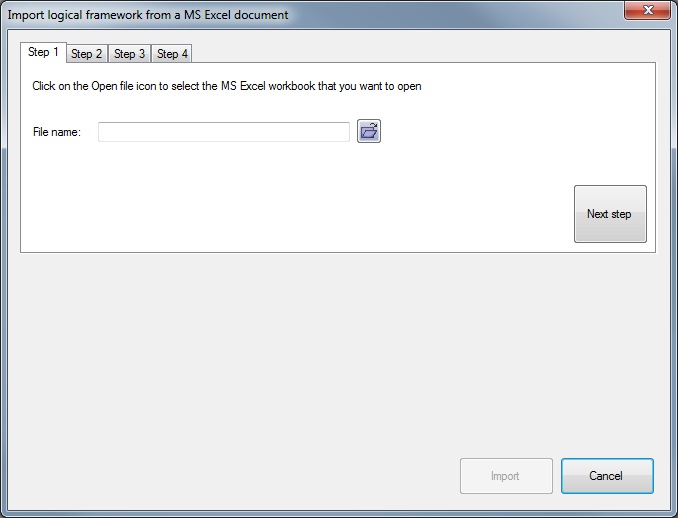
The import process consists of four steps:
- Select the MS Excel document that contains your logical framework
- Select the sheet that contains your logframe
- Indicate which columns contain the objectives, indicators, verification sources and assumptions
- Indicate the rows that contain the goals, purposes, outputs and activities
After you've completed a step, click on the Next step button to proceed. When you've filled out all the information, you can press the Import button on the bottom.
Once you've imported the logical framework, you'll have to shuffle things around a bit. Because Logframer doesn't know which activity belongs to which output and which output belongs to which purpose, they are all placed under the first output or purpose respectively. However, it's easy to move them to their correct location.
The following pages describe the importing process for version 1.2 or higher of Logframer. For information about importing in older versions, follow this link.
Selecting the Excel document that you want to import
The first step is to select the file that you want to import. Press on the  button to open the File selection dialog. Navigate to the file you want to import, select it and then click Ok.
button to open the File selection dialog. Navigate to the file you want to import, select it and then click Ok.

Once you've selected the file, you will see a preview of the first worksheet in the bottom half of the window.
Press the Next step button to proceed.
Select the sheet that contains your logframe
If the worksheet that is shown below does not contain your logframe, you can use the drop-down list to select the correct worksheet.
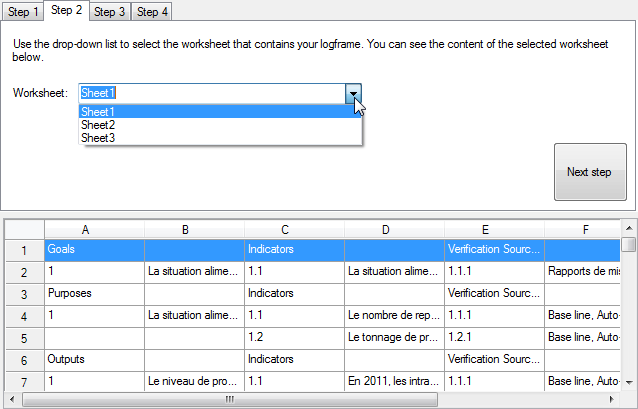
Press the Next step button to proceed.
Choosing the columns of your logframe
Next you need to indicate in which columns the objectives, indicators, verification sources and assumptions can be found. You only need to select the columns that contain the actual text. If you've numbered each item in a separate column in your Excel document, you needn't worry about the numbering. Logframer will renumber all the items.
For instance, in the example below you can see that column A contains the numbers of the goals, purposes, outputs, etc. So the actual Objectives column is B.
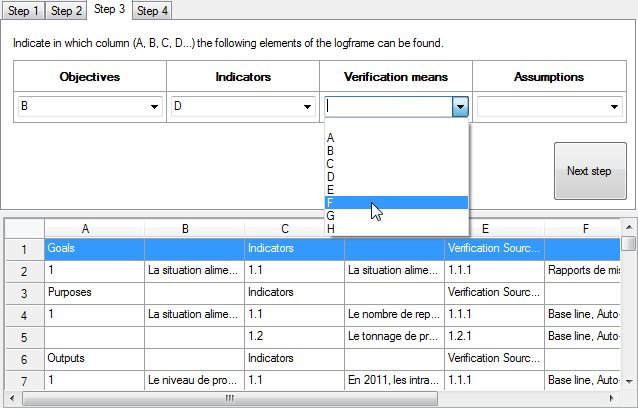
Press the Next step button to proceed
Indicate the different sections
Finally, you have to indicate for each section in which rows the objectives, indicators, etc. can be found. This means that for each section, you enter the number of the first and the last row. Do not include any title rows (if you do, these will also be imported and then you have to remove them manually because Logframer uses its own section titles).
For instance, in the example below, the first row is a title row. So the goals section starts on the second row. There is only one goal in this project, so the goals section also ends on the second row. Row 3 again is a title row, and the purposes section starts on row 4.
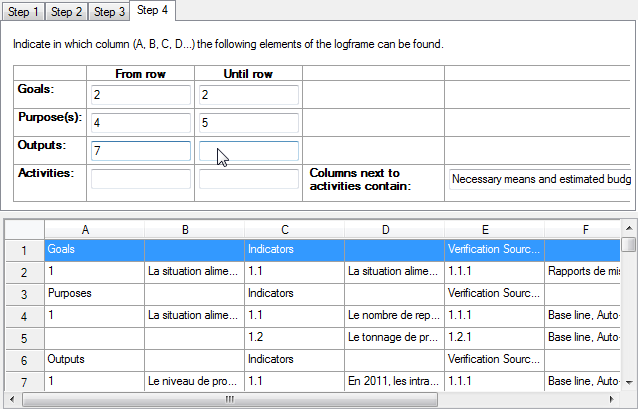
You can also select what information can be found in the second and third column of the Activities section. In most cases, this is where you'd put the necessary resources and the budget for each resource. But if you use progress indicators to check how your activities are doing, you can do that too.
You don't need to import a whole logframe. If you only want to import goals and purposes for instance, but not the outputs or activities, you just complete the start and end rows for the first two sections.
Importing an existing Logical framework from an MS Excel spreadsheet (version 1.0 and 1.1)
This page describes the importing process for versions 1.0 and 1.1 of Logframer. For help about importing in version 1.2 or higher, follow this link
To import an existing logframe from a Microsoft Excel™ spreadsheet, go to File → Import → Logframe from MS Excel file.
The following dialog box will appear. Click on the button on the right of the text box to select the file you want to import.

Logframer will open the file and give a preview of the first worksheet in the workbook. If there are multiple worksheets, you can select the correct one using the dropdown box on top of the preview, which lists all of the available worksheets.
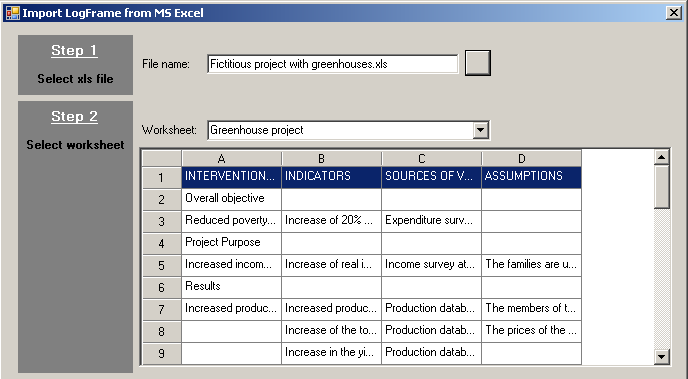
In the third step, you need to indicate which columns contain the objectives, the indicators, the verification sources and the assumptions.
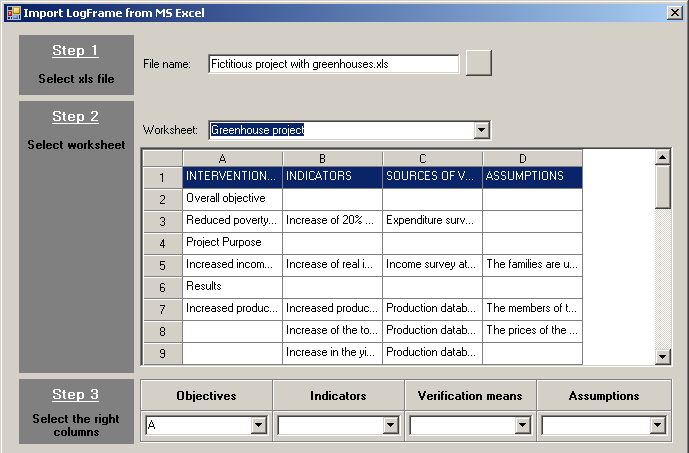
Finally, in the fourth step you need to indicate the first and last row of the goals, purpose(s), outputs and activities.
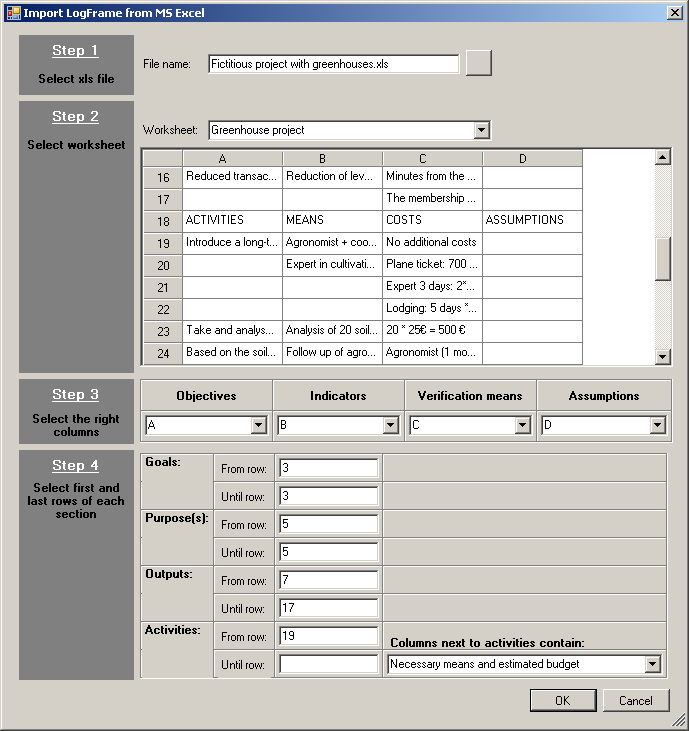
Do not include the title rows (i.e. containing the words ‘Goals’, ‘Purposes’, ‘Indicators’, ‘Assumptions’, etc.). As a final option, you can indicate whether the columns next to the Activities column contain the means and budget of the project, or rather the process indicators and their verification sources (generally, it will be the first option).
After you’ve pressed the < OK > button, Logframer will import your logical framework. Don’t forget to save once the spreadsheet is imported.
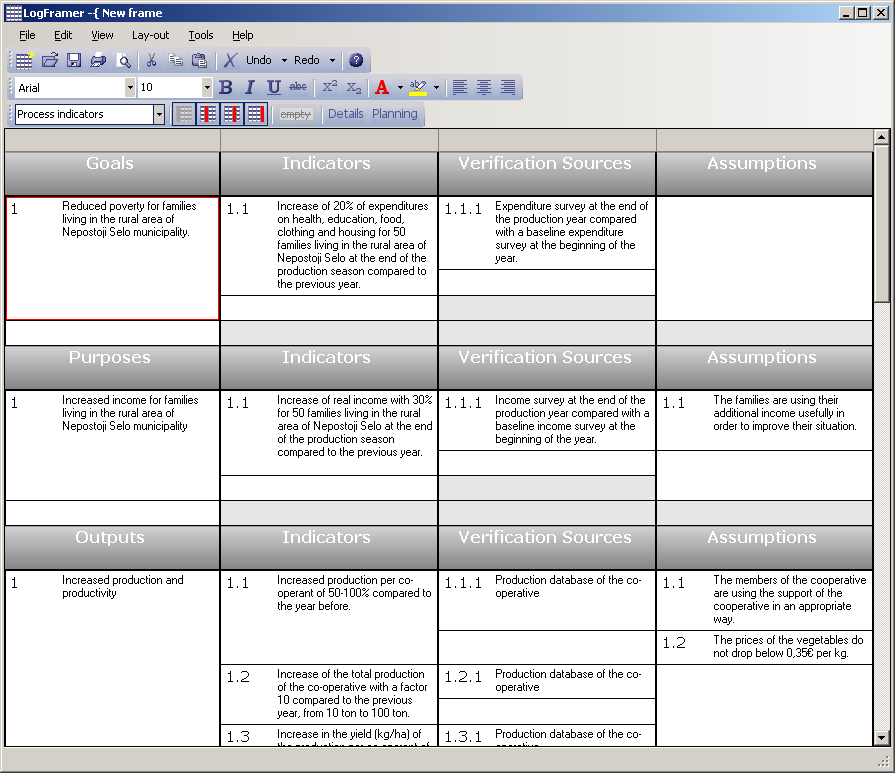
Notice that Logframer automatically numbers all the items (objectives, indicators, verification sources, etc.). However, you should check the numbering of the activities if you have more than one output. Logframer will link all the activities to the first output, so you may have to move the activities around from the first output to one of the others, using the left mouse button to drag-and-drop them.
Similarly, if you have more than one purpose in your logframe, you will see that after the import all outputs are listed under the first purpose.